One Shot Adventures
One Shot Adventures
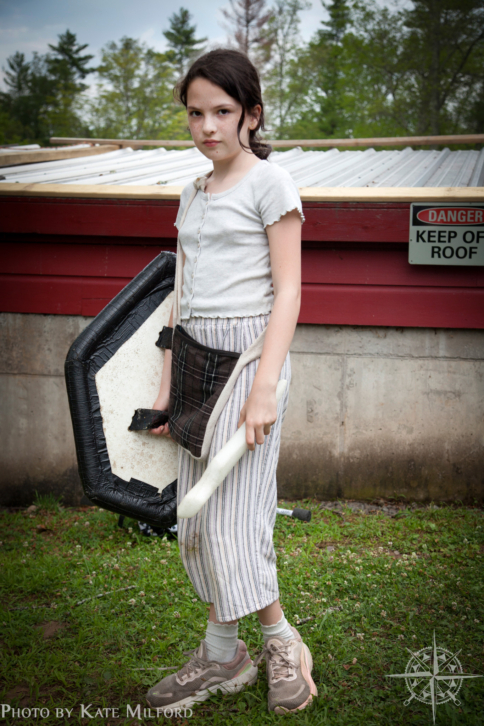 I have previously written here about our campaign style play and the linked worlds we inhabit and return to. I have personally had great play experiences in our campaigns, deep and meaningful connections to characters I have been able to reunite with over periods of months, years, or, with our recent resurgence of Finals games, even decades. This type of play is wonderful and deep in a very special way, but as anyone who has played a long term roleplaying campaign in any format is likely to be familiar with, campaign play is dependent upon an investment of time in a character and story that it can become very difficult to let go or pivot away from that character should they die. This, along with some logistical and creative realities, is a big reason why the majority of the Adventure Games that we run at Wayfinder are One Shots. Singular visits to a world and a character that we will never physically return to. This singular imagined reality, and the very temporary and short lived nature of it, provides players with an important understanding of their characters, the stakes and expectations within the game, and the stories we are able to tell.
I have previously written here about our campaign style play and the linked worlds we inhabit and return to. I have personally had great play experiences in our campaigns, deep and meaningful connections to characters I have been able to reunite with over periods of months, years, or, with our recent resurgence of Finals games, even decades. This type of play is wonderful and deep in a very special way, but as anyone who has played a long term roleplaying campaign in any format is likely to be familiar with, campaign play is dependent upon an investment of time in a character and story that it can become very difficult to let go or pivot away from that character should they die. This, along with some logistical and creative realities, is a big reason why the majority of the Adventure Games that we run at Wayfinder are One Shots. Singular visits to a world and a character that we will never physically return to. This singular imagined reality, and the very temporary and short lived nature of it, provides players with an important understanding of their characters, the stakes and expectations within the game, and the stories we are able to tell.
LARP is a chance to explore identity. One Shots turn this exploration from a deep dive into a buffet. If you play in three Adventure Games, which in one summer you could achieve with three weeks of camp or just by attending Overnight 4 where we run three fully separate Games in three fully distinct worlds, you are given the chance to play a minimum of three characters. When you have that kind of opportunity, it shifts the dynamic when it comes to risk aversion. Not every hero survives their story. Being in a One Shot often gives us the chance to play out the kinds of scenes that we may shy away from in campaign play. The death of a character who you have spent months or years playing can be a hard thing to stomach, from the personal attachments we form to the very real time investment that cannot be instantly recreated in the next character. One Shots free us from that. In the words of Sparrow, a long time camper of ours, “I love the feeling of sweet desperation. You get these small little bite sized pockets of beauty and bonding, and I usually walk into these games knowing most of my loved ones in the game will die. I think it creates this sweet vibe that I love!” The short nature of the game opens the players to options that may normally feel scary, unavailable, or too heavy to consider.
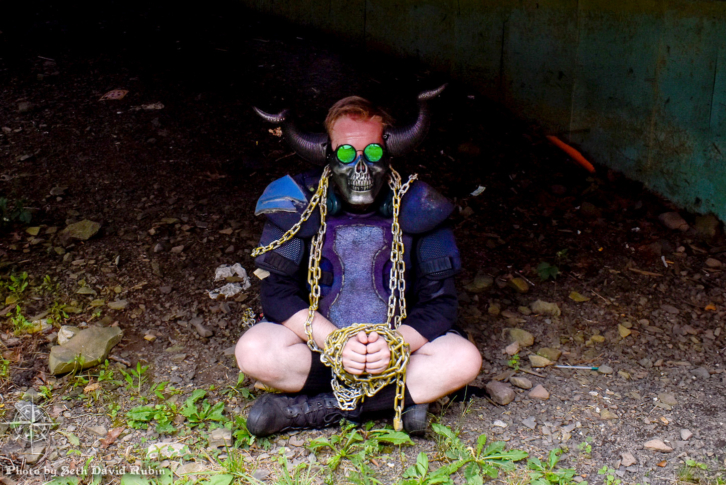 We are able to be the noble and self sacrificing hero, the one left holding back the forces of evil as our friends escape. We can play the fool, and walk knowingly into a trap that will mean our end. We can experience in real time being the one who is lost, the one who is mourned by those left behind. Having personally survived my own character’s funeral on more than one occasion, I can tell you that it is a powerful and lasting experience. With so little time for our characters to live regardless of our choices, we are given the chance to take chances and risk it all. One Shot play gives us the gift of all of these things that can be so terrifying, whether in campaign play or in their very real and permanent occurrences in real life. In the words of another of our campers, Eloise, “I really enjoy the temporary parts of it, since they aren’t very long. You are only seeing a part of the story of your character, not the whole book. On the out of character side you make connections in-game with people you might’ve never connected to otherwise because you’re not afraid to explore, no matter how poorly it goes, it’ll just be temporary.” The scope of choices you can make and your opportunities to connect with people are magnified. You are not with the same group of players every time. You have the chance to hide from demons with one group of players, and then turn around in your next Adventure Game and fight to overthrow the kingdom. The bonds you build last. The characters and stories don’t have to.
We are able to be the noble and self sacrificing hero, the one left holding back the forces of evil as our friends escape. We can play the fool, and walk knowingly into a trap that will mean our end. We can experience in real time being the one who is lost, the one who is mourned by those left behind. Having personally survived my own character’s funeral on more than one occasion, I can tell you that it is a powerful and lasting experience. With so little time for our characters to live regardless of our choices, we are given the chance to take chances and risk it all. One Shot play gives us the gift of all of these things that can be so terrifying, whether in campaign play or in their very real and permanent occurrences in real life. In the words of another of our campers, Eloise, “I really enjoy the temporary parts of it, since they aren’t very long. You are only seeing a part of the story of your character, not the whole book. On the out of character side you make connections in-game with people you might’ve never connected to otherwise because you’re not afraid to explore, no matter how poorly it goes, it’ll just be temporary.” The scope of choices you can make and your opportunities to connect with people are magnified. You are not with the same group of players every time. You have the chance to hide from demons with one group of players, and then turn around in your next Adventure Game and fight to overthrow the kingdom. The bonds you build last. The characters and stories don’t have to.
 Despite the modern reality of franchise films, not every story needs a sequel. Sometimes, the world can be saved for good. One Shots, as they exist as complete stories, provide us with a kind of permanent resolution that it can be difficult to find in continued play experience. There is no reopening of old wounds. There is no return of a villain or a problem. The world has been saved from the demons who sought to destroy it, full stop. That kind of finality is satisfying. The world is safe. Our sacrifices mattered. The world we played in can turn on, no new problems on the horizon. It is useful and important to tell stories that mirror life, with a world that is complex and changing, never fully saved and never done improving. It is also deeply important to remind ourselves that we can win battles. We can triumph. We can overcome. We can die, and mourn, and love and fight all in the course of a few hours. Each one of us contains an endless number of characters. One Shots give us the chance to give more of them a chance to see a little daylight. Not every hero has to fight in endless battles. Sometimes, we can simply stay safe.
Despite the modern reality of franchise films, not every story needs a sequel. Sometimes, the world can be saved for good. One Shots, as they exist as complete stories, provide us with a kind of permanent resolution that it can be difficult to find in continued play experience. There is no reopening of old wounds. There is no return of a villain or a problem. The world has been saved from the demons who sought to destroy it, full stop. That kind of finality is satisfying. The world is safe. Our sacrifices mattered. The world we played in can turn on, no new problems on the horizon. It is useful and important to tell stories that mirror life, with a world that is complex and changing, never fully saved and never done improving. It is also deeply important to remind ourselves that we can win battles. We can triumph. We can overcome. We can die, and mourn, and love and fight all in the course of a few hours. Each one of us contains an endless number of characters. One Shots give us the chance to give more of them a chance to see a little daylight. Not every hero has to fight in endless battles. Sometimes, we can simply stay safe.
Written by Judson Easton Packard July 2024

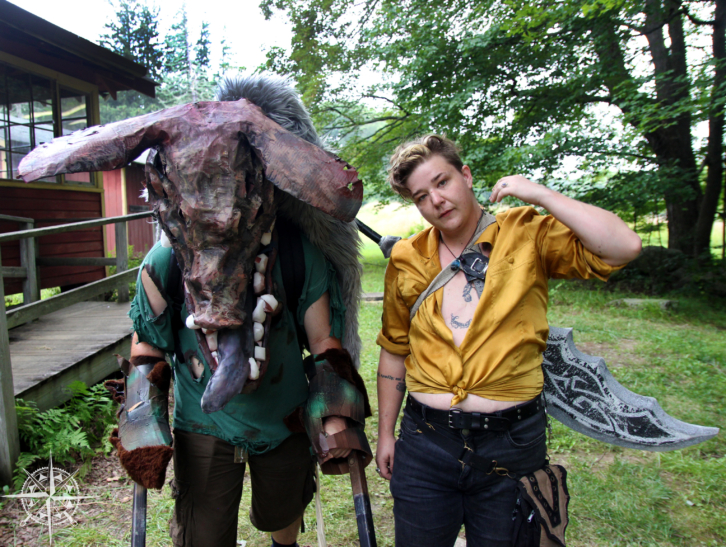 Campaign play allows us to spend more time with a particular character and story line, to carry our characters forward through a series of events and construct singular narratives around the different stories they find themselves at the center of. Characters always provide us a reflection of ourselves, a vision into another way that we could be and interact with those around us. Returning to a character can feel like coming home to yourself. Characters can share a lot with us, they may be good, they may be evil, but whoever they are, the distance they provide from our everyday selves brings a newness into the body that can be very welcoming. The longer you play as a particular character, the more of that character’s life you will hold in your memory.
Campaign play allows us to spend more time with a particular character and story line, to carry our characters forward through a series of events and construct singular narratives around the different stories they find themselves at the center of. Characters always provide us a reflection of ourselves, a vision into another way that we could be and interact with those around us. Returning to a character can feel like coming home to yourself. Characters can share a lot with us, they may be good, they may be evil, but whoever they are, the distance they provide from our everyday selves brings a newness into the body that can be very welcoming. The longer you play as a particular character, the more of that character’s life you will hold in your memory.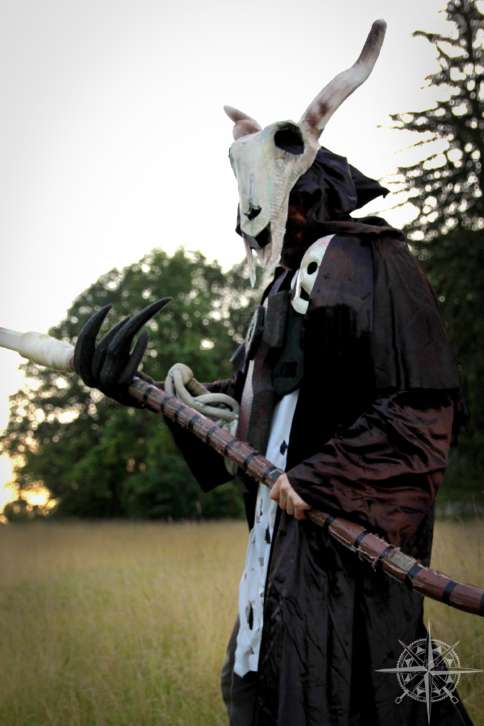 Last summer we returned to having linked Campaign style Adventure Games as a part of our summer offerings. Over the course of two weeks of camp players were introduced to a world that our staff had collaborated to build the mythology of. People built characters that had to face off against an ancient evil, a lich who had found a way to once again crawl out of death. In our first week characters fought an increasingly desperate battle to stem the tides of undeath, to hold this evil back before it swallowed the world. They were successful, but at the price of a large number of their own, including some heroes they had grown to care about. In the second week we opened with a funeral for one of those characters who had passed. Campers and staff alike gave impromptu elegies that brought a solemn warmth to the scene, and made it all the more upsetting when the character rose again possessed by the lich. Playing in the same world over the course of multiple weeks, made everything feel more familiar, more lived in. Campers were able to share stories and lore with one another. The world became truly collaborative.
Last summer we returned to having linked Campaign style Adventure Games as a part of our summer offerings. Over the course of two weeks of camp players were introduced to a world that our staff had collaborated to build the mythology of. People built characters that had to face off against an ancient evil, a lich who had found a way to once again crawl out of death. In our first week characters fought an increasingly desperate battle to stem the tides of undeath, to hold this evil back before it swallowed the world. They were successful, but at the price of a large number of their own, including some heroes they had grown to care about. In the second week we opened with a funeral for one of those characters who had passed. Campers and staff alike gave impromptu elegies that brought a solemn warmth to the scene, and made it all the more upsetting when the character rose again possessed by the lich. Playing in the same world over the course of multiple weeks, made everything feel more familiar, more lived in. Campers were able to share stories and lore with one another. The world became truly collaborative. 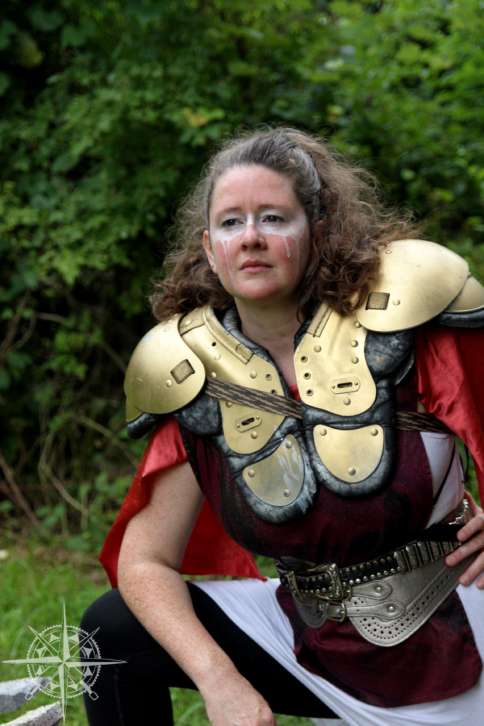 After the summer we had two opportunities to return to our campaign world. At our Adult Retreat we played a prequel that took place in the same world, giving a perspective to characters and storylines from the summer. Many of our staff, having worked over the summer, found themselves getting the chance to play as PCs in earlier storylines that tied into their experiences over the summer. A number of them found this deepened their experience, they already felt connected to the mythology and the chance to build into that world in its early days provided a unique LARP experience for them.
After the summer we had two opportunities to return to our campaign world. At our Adult Retreat we played a prequel that took place in the same world, giving a perspective to characters and storylines from the summer. Many of our staff, having worked over the summer, found themselves getting the chance to play as PCs in earlier storylines that tied into their experiences over the summer. A number of them found this deepened their experience, they already felt connected to the mythology and the chance to build into that world in its early days provided a unique LARP experience for them.  This summer we will be having two more linked games. Building out these games is a fun design challenge. We have to craft two games that are stand alone stories, but played together they show a full story arc, and as with all of our Adventure Games, the storyline that we play wraps up, the campaign does not stretch forward forever. It is a hallmark of our Adventure Games that we build these worlds and these characters, inhabit them, and continue into the next story. This summer at our first two weeks of Overnight Camp we will be playing linked games and hope to see you there! What will you build with us? Where does your story lead?
This summer we will be having two more linked games. Building out these games is a fun design challenge. We have to craft two games that are stand alone stories, but played together they show a full story arc, and as with all of our Adventure Games, the storyline that we play wraps up, the campaign does not stretch forward forever. It is a hallmark of our Adventure Games that we build these worlds and these characters, inhabit them, and continue into the next story. This summer at our first two weeks of Overnight Camp we will be playing linked games and hope to see you there! What will you build with us? Where does your story lead?